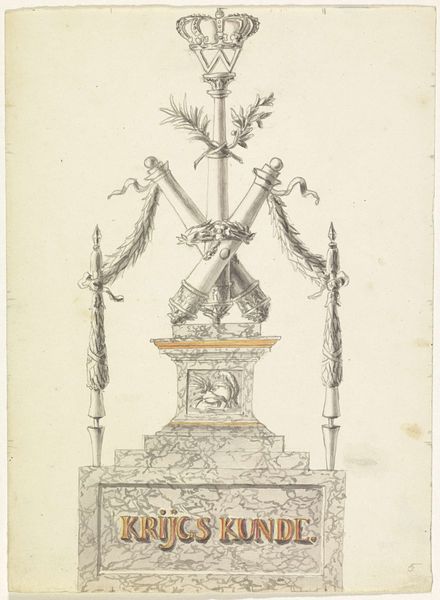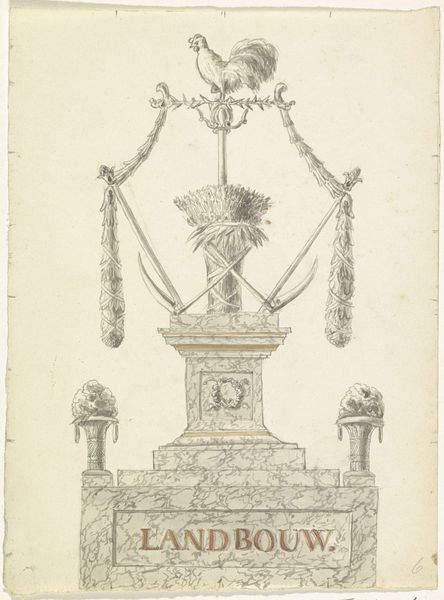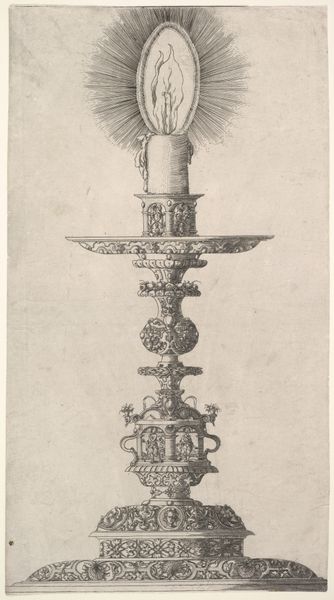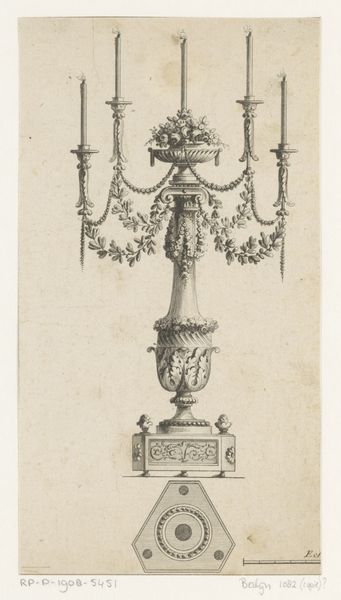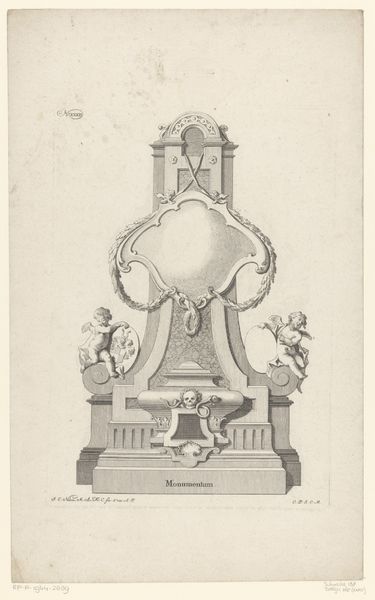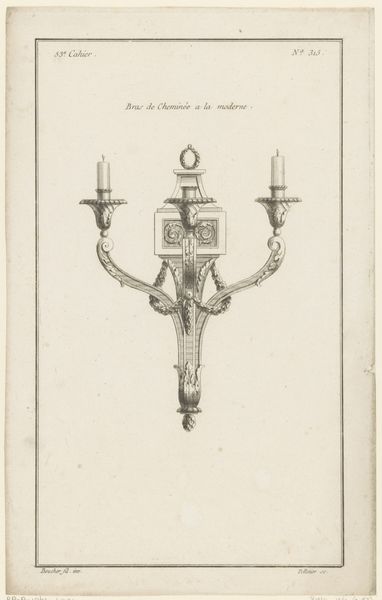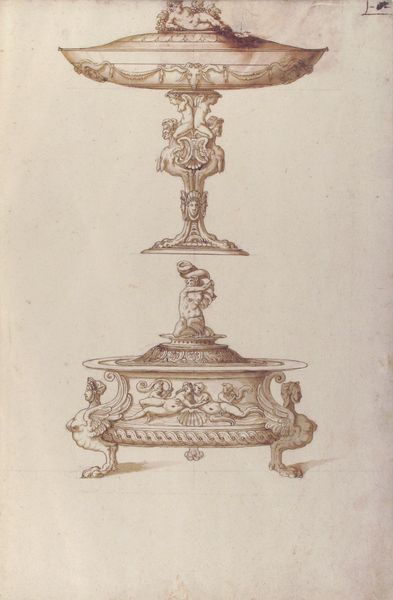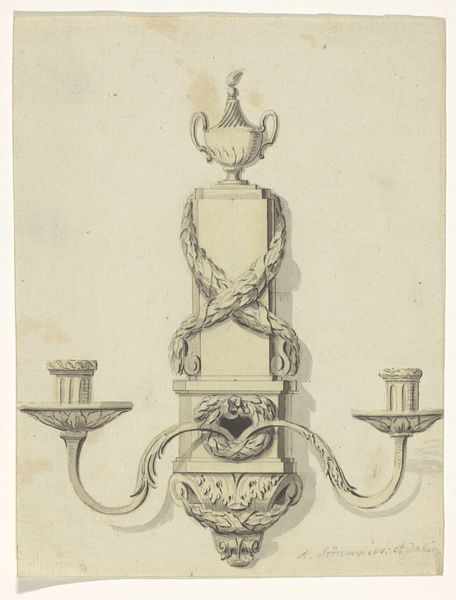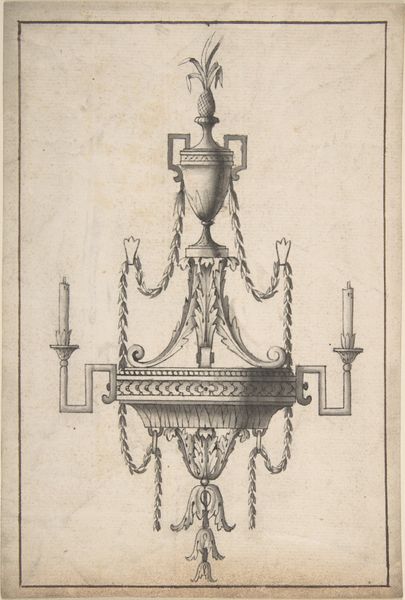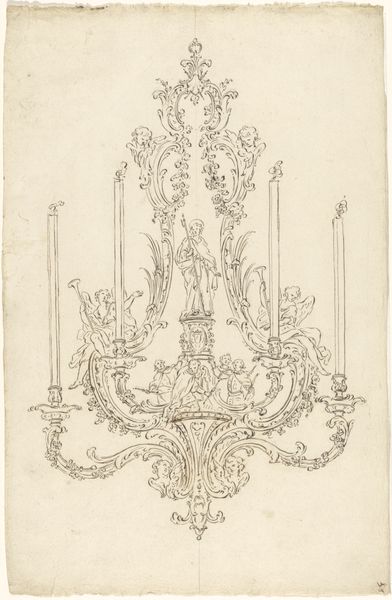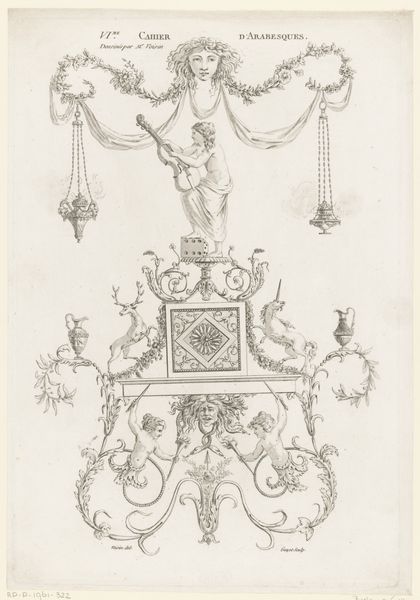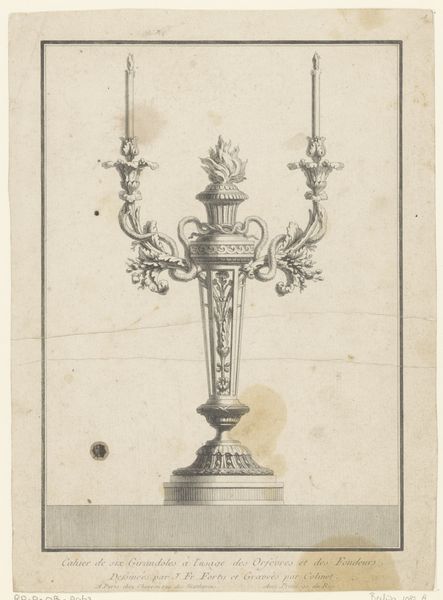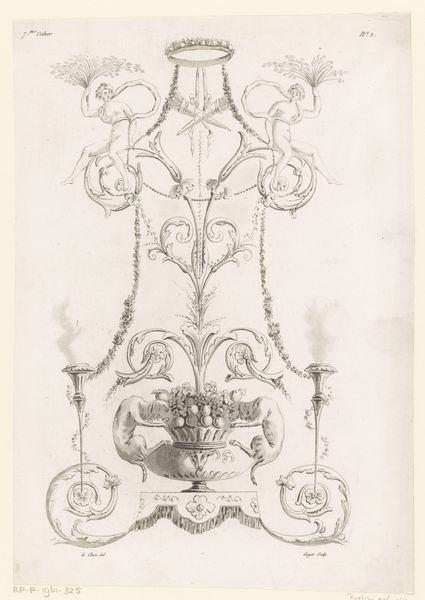
Dimensions: height 230 mm, width 175 mm
Copyright: Rijks Museum: Open Domain
Curator: This delightful drawing, currently held at the Rijksmuseum, captures a fleeting moment: the decoration on Keizersgracht near Hartenstraat in 1816. It is titled, appropriately, "Decoratie op de Keizersgracht bij de Hartenstraat, 1816." Editor: My first impression is quite formal and idealized; a structured, almost stage-like construction featuring motifs reminiscent of maritime power. The use of watercolor and blue ink on paper seems to amplify this calculated refinement. Curator: Indeed. The symbolic language speaks volumes. Consider the prominent trident at the top, directly referencing Neptune, the Roman god of the sea, a clear signifier of naval strength and dominance. And then the shield. Editor: All set atop what appears to be faux-marbled base! It strikes me as deliberately temporary, fabricated—perhaps mostly wood, canvas, and plaster. The time, labor, and expense behind such temporary structures tells a story itself, doesn't it? Were these common, and what sort of workshop likely produced them? Curator: Commemorative decorations were certainly more common then than now. Note the garlands and the maritime motifs. And “Zeevaart”—seafaring. This decoration likely marked some kind of maritime celebration or possibly even a commercial venture given Amsterdam's economic reliance on sea trade. Editor: Right! The very *idea* of seafaring rendered in gilt lettering over a marbled façade, like advertising a concept… a spectacle built around mercantile ideology. You've got illusion mimicking wealth, and ephemeral architecture designed to broadcast a message. Curator: Exactly! We are witnessing the visualization of civic pride and economic prowess. And the geometric framework underlying the composition lends this drawing a sense of enduring order, which connects to Neoclassical ideals that prized clarity and harmony. Editor: The ephemeral made monumental. It’s a fleeting celebratory aesthetic constructed to solidify specific economic narratives for an intended viewing public. I'd love to examine surviving guild records from the time to learn who designed these. Curator: Studying the symbolism of similar public displays would give more texture, connecting historical, cultural, and social implications. What kind of impact they made, and what they meant for the city, can open into various histories of trade, power, and display. Editor: And for me, thinking about material construction, deconstruction, re-use… helps reveal assumptions about consumption and spectacle.
Comments
No comments
Be the first to comment and join the conversation on the ultimate creative platform.
